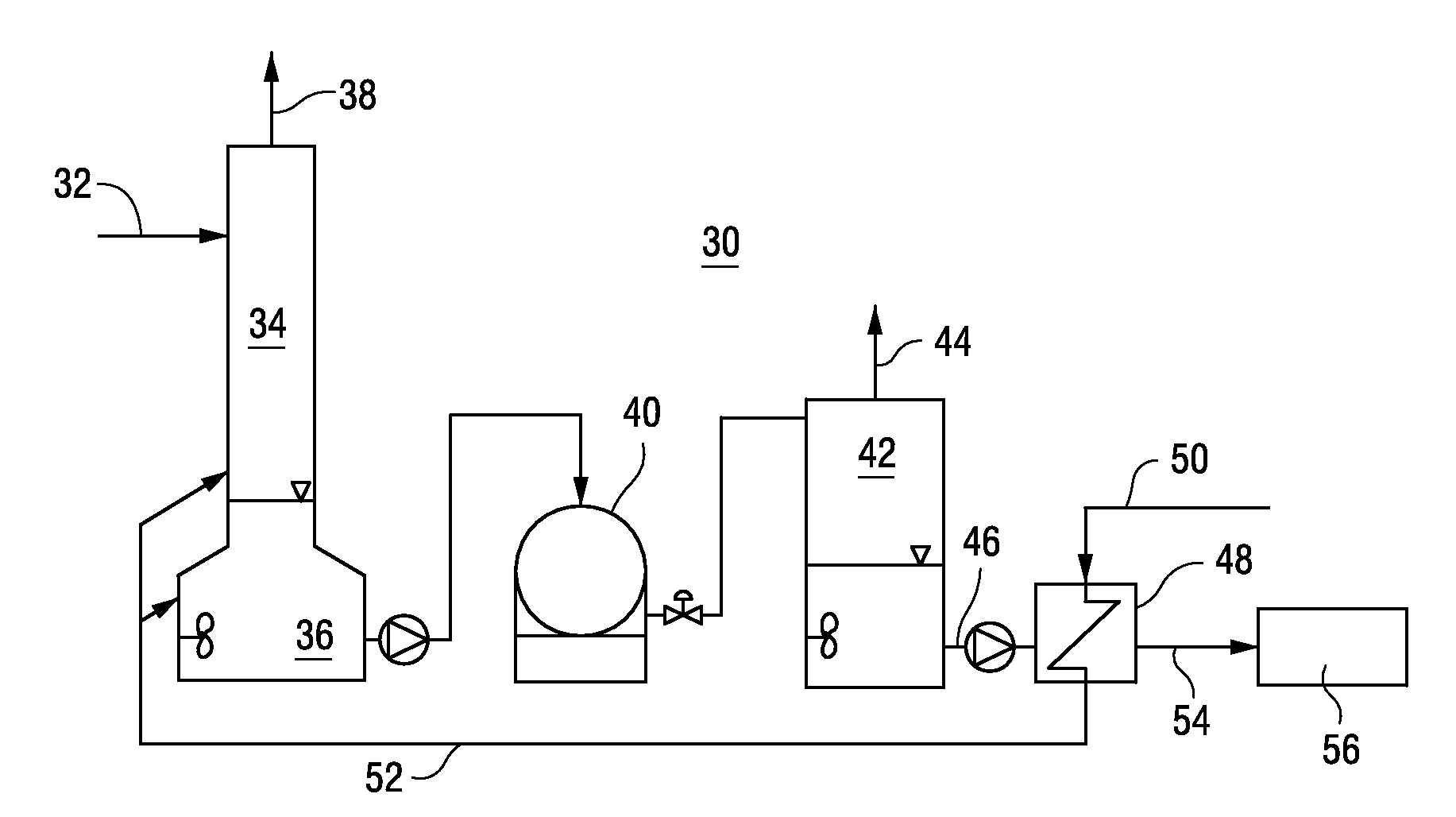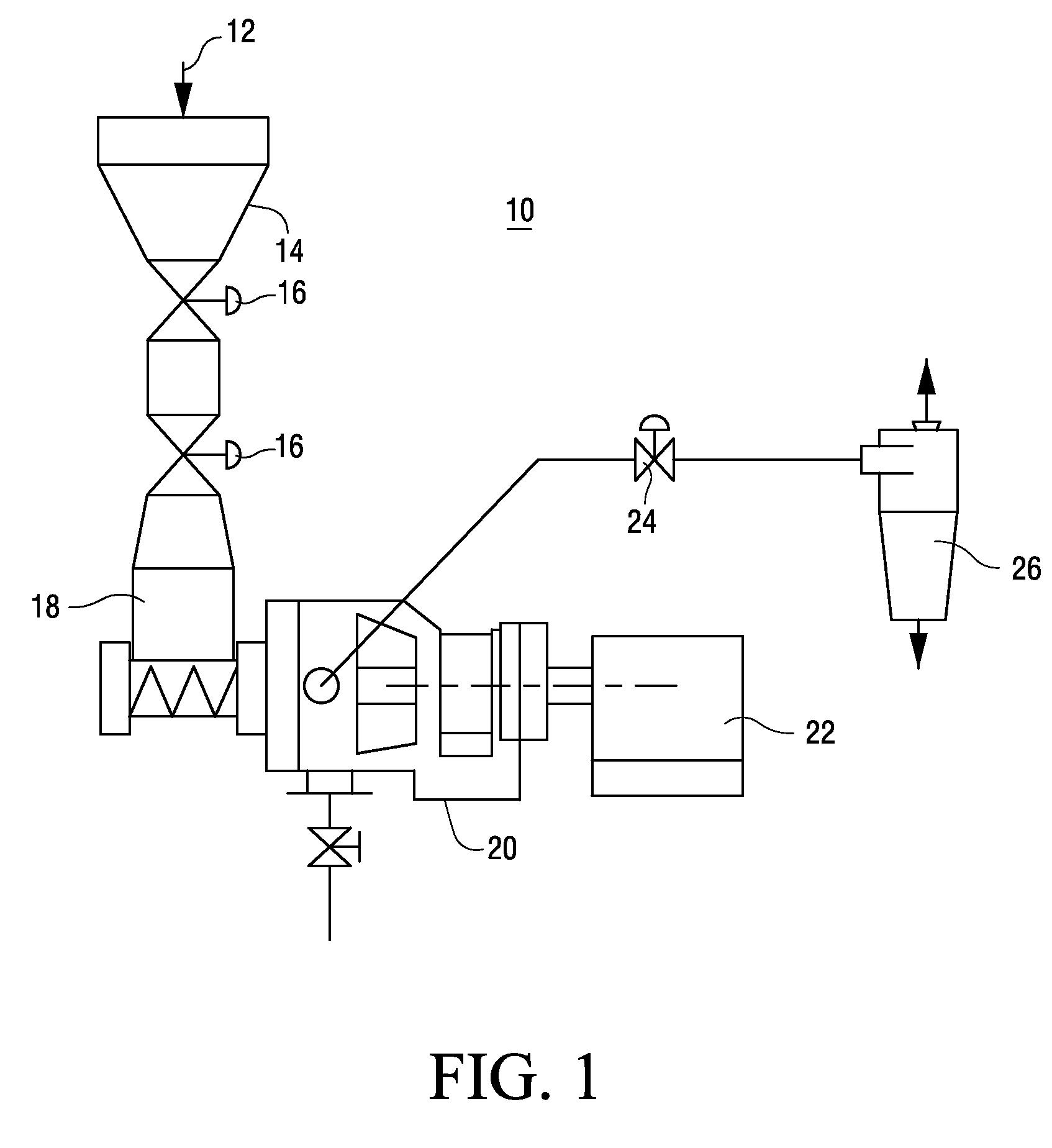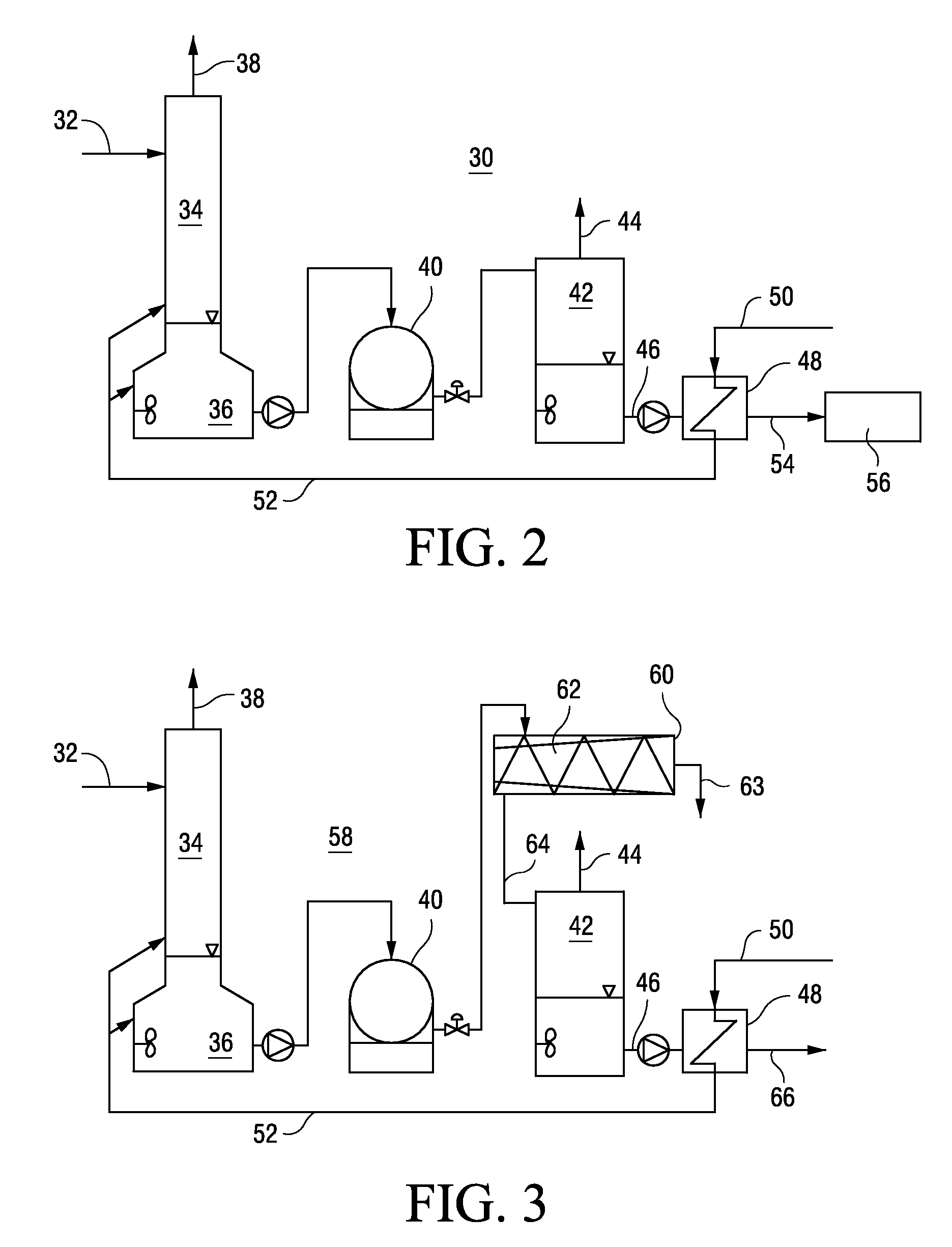Method and system for energy savings in TMP by high temperature LC/MC refining of pulp
a high temperature lc/mc and refining technology, applied in the multi-stage pulping process, pulp liquor regeneration, papermaking, etc., can solve the problems of significant shortening and loss of fiber strength, poor energy efficiency of mechanical pulping, and burdening both types of virgin fibers for papermaking, reducing latency chest and screening requirements, and simplifying the tmp flow sheet. , the effect of significant energy saving
- Summary
- Abstract
- Description
- Claims
- Application Information
AI Technical Summary
Benefits of technology
Problems solved by technology
Method used
Image
Examples
first embodiment
[0032]FIG. 2 is a flow sheet for a pulp refining plant 30 that recovers high pressure steam from flash tanks. The plant 30 improves the optimization of the overall heat balance in the plant by recovering a major portion of the energy applied in the LC or MC stage in the form of steam.
[0033]From a blowline 32 of a primary pressurized refiner (see e.g., blowline 24 and refiner 20 in FIG. 1), fibers are discharged into a pressurized cyclone 34, which is sealed at the bottom by a water-lock or liquid phase separator 36. Liquid phase separators are used in several North American TMP plants. In the upper portion of the cyclone 34, steam 38 is separated from the fibers and led to the heat recovery system (not shown). Some of the steam 38 may be utilized to heat dilution water to about 140° C., which is pumped to the water-lock at the bottom of the cyclone.
[0034]From the water-lock 36, hot pulp is pumped, at about 4% to 5% consistency, to a low consistency refiner 40. The refiner may be pow...
second embodiment
[0039]FIG. 3 is a flow sheet for a pulp refining plant 58 that recovers high pressure steam from flash tanks. To the extent that the plant 58 in FIG. 3 has components in common with the plant 30 shown in FIG. 2, similar reference numerals have been used in both figures.
[0040]The flow chart of FIG. 3 shows an alternate process 58 (to that shown in FIG. 2) that also involves pulp washing. The process 58 shown in FIG. 3 may be applied in a MC refining process and the process 30 (FIG. 2) may be applied in a LC refining process. A difference between the two processes, is that pulp flows through a flash tank and heat exchanger in process 30 but not in process 58.
[0041]In process 58, a pressurized pulp slurry flows form the pressurized cyclone 34 with the water-lock 36, and is pumped preferably at medium consistency (MC) to a refiner 40. The MC pulp flows from the refiner to a screw-press 60 having a pressurized pressate collection mantle 62. The hot fiber pressate 63 from the screw-press ...
PUM
| Property | Measurement | Unit |
|---|---|---|
| pressure | aaaaa | aaaaa |
| temperature | aaaaa | aaaaa |
| temperature | aaaaa | aaaaa |
Abstract
Description
Claims
Application Information
 Login to View More
Login to View More - R&D
- Intellectual Property
- Life Sciences
- Materials
- Tech Scout
- Unparalleled Data Quality
- Higher Quality Content
- 60% Fewer Hallucinations
Browse by: Latest US Patents, China's latest patents, Technical Efficacy Thesaurus, Application Domain, Technology Topic, Popular Technical Reports.
© 2025 PatSnap. All rights reserved.Legal|Privacy policy|Modern Slavery Act Transparency Statement|Sitemap|About US| Contact US: help@patsnap.com



